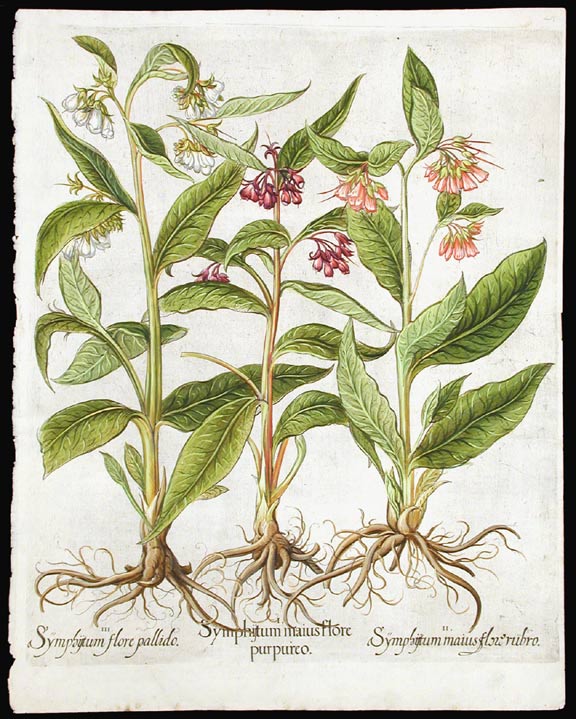- Store
- >
- Medicinal Plants
- >
- 20 Comfrey seeds, Symphytum officinale, 'Knit-bone,' 'Bruisewort'
20 Comfrey seeds, Symphytum officinale, 'Knit-bone,' 'Bruisewort'
Barely cover seeds and keep moist. Initial germination in two to four weeks, then let seeds sit dry and try again in a month for second comers. Loves water, grows near streams, best in part shade protected from strong afternoon sun. Needs high nitrogen, so add manure or use fish emulsion.
The plant is erect in nature and hairy all over. The branched roots are fibrous and fleshy, spindle-shaped, an inch or less in diameter and up to a foot long, smooth, blackish externally, and internally white, fleshy and juicy. The purple flowers are bell-shaped, the calyx deeply five-cleft, narrow to lance-shaped. The fruit consists of four shining nutlets and adhering to the receptacle by their base. Comfrey is in bloom throughout the greater part of the summer, the first flowers opening at the end of April or early May. Splitting a crown on a healthy plant is the fastest way to get a mature comfrey plant.
Comfrey leaves have been used for centuries as an external remedy for sprains, bone fractures, bruises, severe cuts, suppuration of boils and abscesses, and for gangrenous ulcers. Internally, it was used for lung troubles, for whooping-cough, pulmonary complaints, consumption and internal bleeding. Long-term internal use is not recommended, as it may cause liver damage. The plant abounds in mucilage.
Ri




